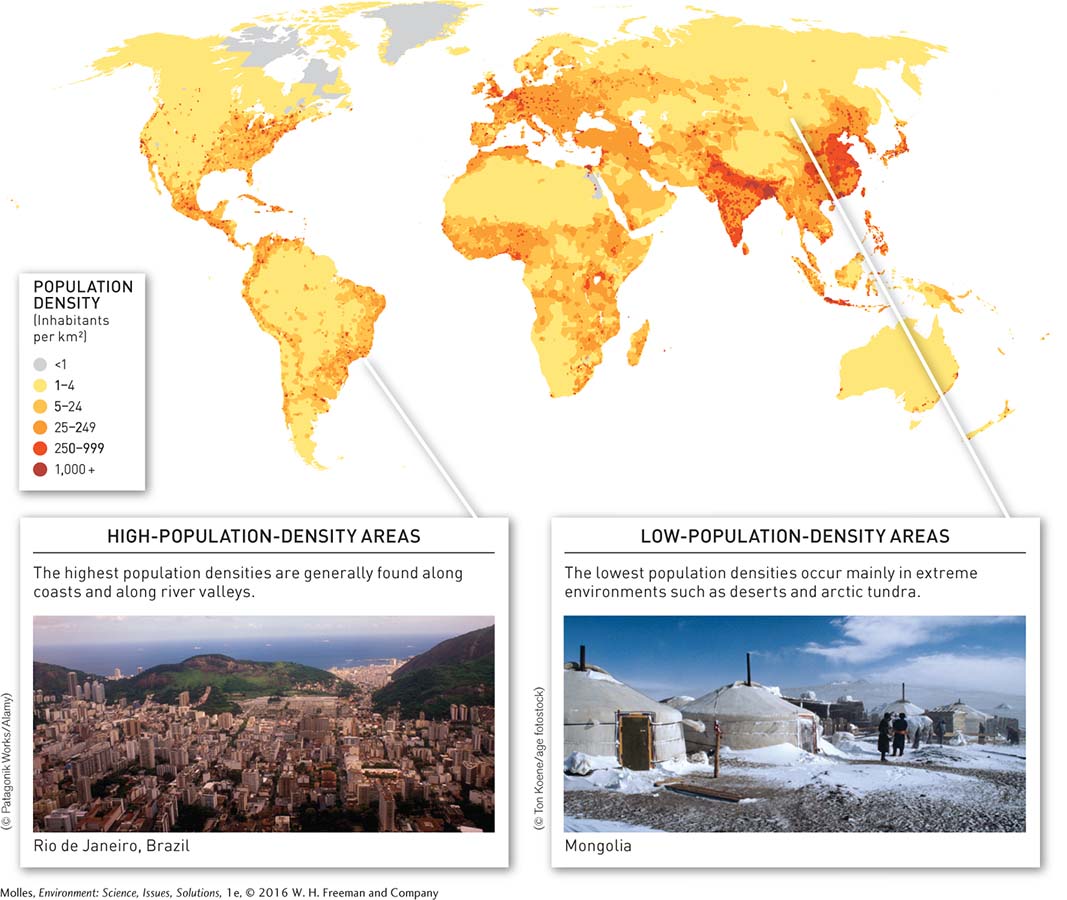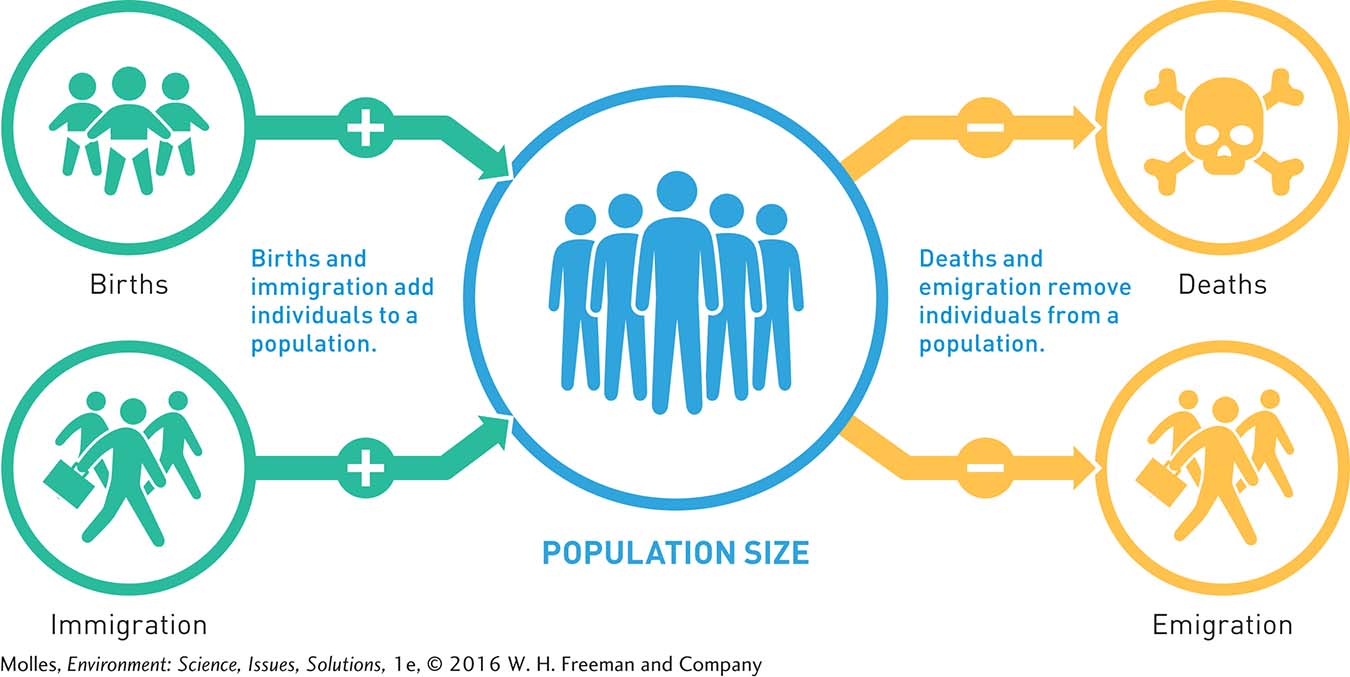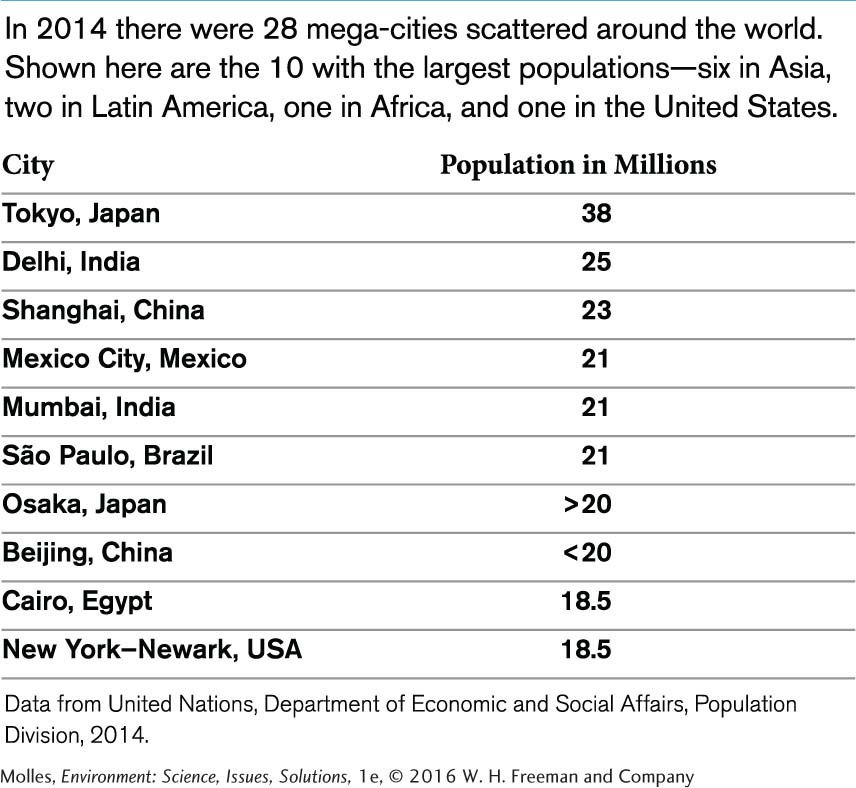5.1–5.3 Science

Human population density lies at the root of environmental damage. In order to minimize the environmental impact of human societies, we need to know where people live today and where they will be concentrated in the future.
5.1 Human population density varies significantly across Earth

What might be the impacts on the environment of concentrating the population in densely populated cities versus spreading the population across the landscape?
population density The number of individuals in a population per unit area.
In Bangladesh, people are crowded together with an average density of nearly 1,000 people on every square kilometer of land (or 0.39 square miles). Australia, by comparison, has an average of just 3 people in the same-

immigration The movement of individuals into an area, or country, to which they are not native.
emigration The movement of individuals out of one area, or country, to another.
We know that people don’t always stay in the place where they were born. Population density results from a combination of the rates of birth, death, immigration (movement of individuals into a population from the outside), and emigration (movement of individuals away from a population to another area) (Figure 5.2). On a regional scale, in places where rates of birth and immigration exceed rates of emigration and death, population density will increase. In regions where birth and immigration rates are lower, population density declines.

Today, populations around the world are becoming increasingly concentrated in cities as people migrate from rural to urban areas. By 2014 over half the world’s population was living in cities, with that proportion expected to rise to two-
Think About It
How do you explain the higher population densities in coastal areas around the world?
Europe, Canada, and the United States are within about 10% of each other in terms of land area. However, their population densities differ markedly (Europe: 70 per km2; United States: 31 per km2; Canada: 3.2 per km2). What factors likely account for these differences?
What factors are attracting people from rural areas to cities?
